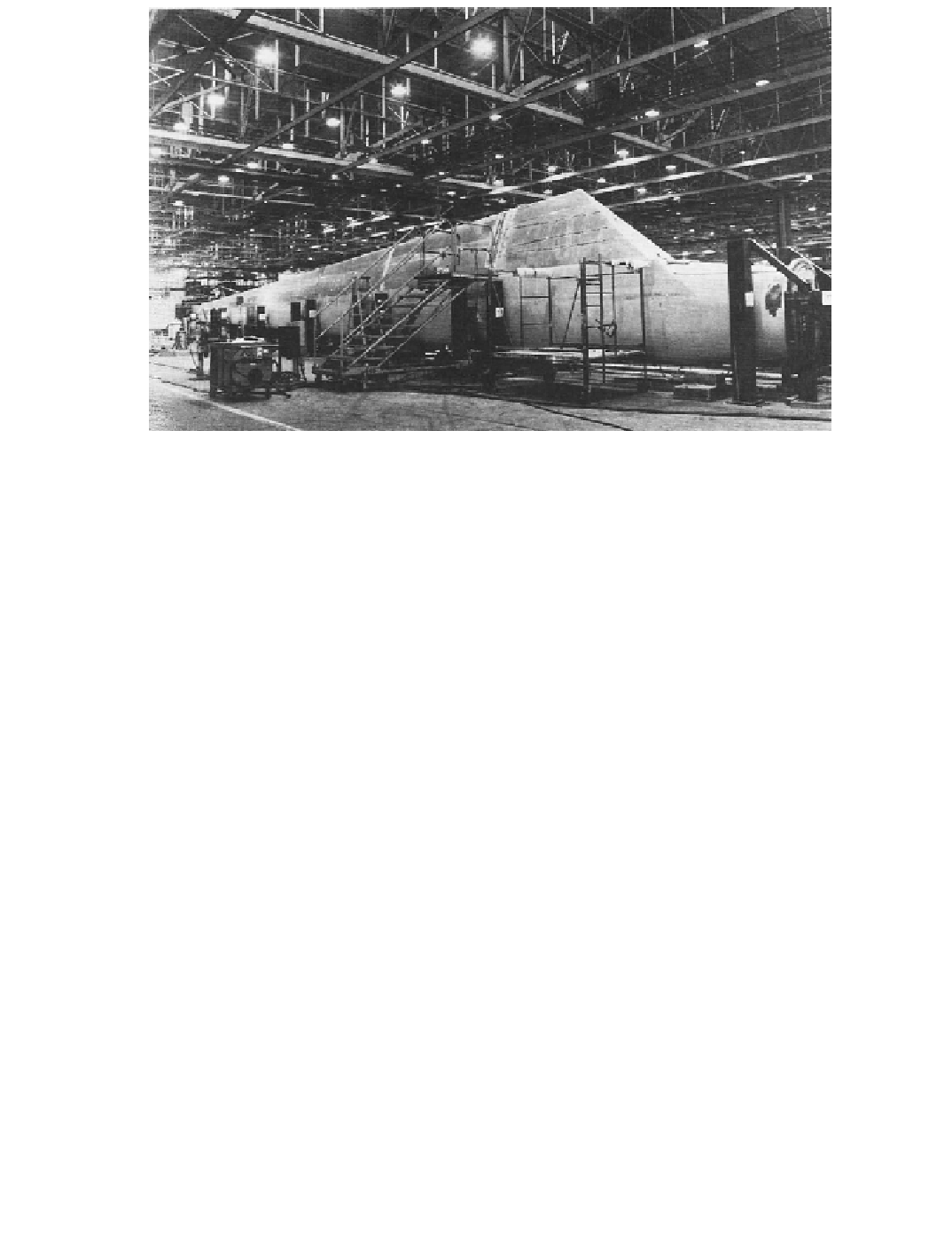Environmental Engineering Reference
In-Depth Information
Figure 3-32. A 30-m long Mod-1 blade during inal assembly at the Boeing Aerospace
plant in Seattle, Washington.
The structural spar was fabricated from welded steel plates,
to which trailing edge sections of foam-illed iberglass were bonded. [Linscott
et al
. 1984]
The Mod-1 design, however, was not completely successful. While it achieved its
rated power and operated safely in an unattended, automatic mode, the wind velocity
decrements behind the stubby truss tower applied high, impulsive loads to the rigidly-
mounted blades. While no major blade problems actually occurred, it was clear that this
design coniguration would not have the 20- to 30-year life necessary in a commercial
turbine. Improperly-torqued bolts attaching the turbine shaft to the hub did fail near the
completion of the test program, but no major damage ensued because the rotor was sup-
ported by a large bearing mounted directly to the nacelle structure. However, it was
deemed wisest to dismantle the turbine. The 60-m welded steel rotor, at that time the
largest that had ever been built, was placed on display at the Science Museum in Raleigh.
Environmental Problems
The Mod-1 encountered two environmental problems: interference with television
signals and acoustic noise. In parallel with the technology portion of the wind energy
development program at the NSF, a major study was initiated with
Battelle Memorial
Institute
in Columbus, Ohio, to identify any conceivable environmental effects that could
be caused by either an individual wind turbine or by the large-scale use of wind power
[Rogers
et al.
1977]. These ranged from the possibility of affecting the micro-climate to
striking birds. The latter was, in fact, a major initial worry regarding the large scale use
of wind power, regardless of the size of the individual turbines. Extensive tests on and
around the Mod-0 HAWT showed that there were no signiicant ecological effects.
However, while the locale is rich in herbivorous and migratory birds, it has few local
raptors. Some later wind power stations in California did encounter bird strikes with
raptors, for which potential ameliorating approaches were taken.

Search WWH ::

Custom Search